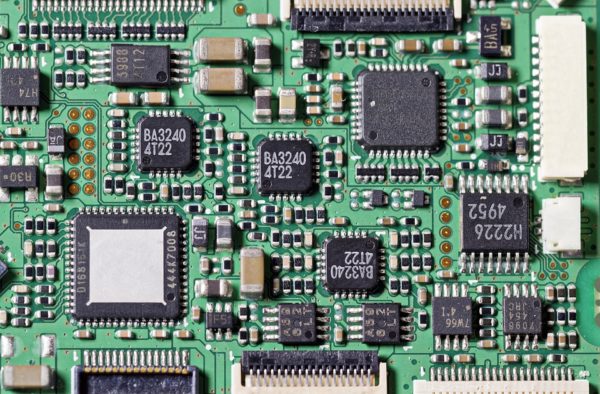Printed Electronics: Exploring Key Printing Techniques
Updated 01/11/2021
Despite many of the technological breakthroughs coming in recent decades, the concept of printed electronics was established over one hundred years ago. A patent for crude printed circuit board (PCB) technology was filed in Germany as early as 1903, but it took another thirty-three years before industrial-scale PCB manufacturing was truly realized. Now, printed electronics are ubiquitous at virtually every level of society from individual personal devices to complex integrated infrastructural systems.
What is Meant by Printed Electronics?
Printed electronics refers to a wide range of printing methods used to deposit functional inks onto a wide range of substrates, fabricating active/passive electronic elements, like capacitors, resistors, and thin-film transistors. Numerous techniques now exist for generating advanced printed electronics at smaller scales and higher electronic densities than ever before. In this blog post, we will consider some of the key printing techniques available to electronics engineers today.

Spin Coating / Doctor Blading
Spin coating, often referred to as doctor blading, is one of the most commercially-available methods of printing electronic elements onto functional substrates. It is a diverse technology in its own right, but each subset of spin coating tends to follow the same basic theory: A nanoparticle dispersion is deposited onto a substrate that is mounted on / adhered to a rotatable platform. Once the dispersion has fully covered the substrate, the platform rotates at high speed, shedding most of the ink from the surface. The remaining material is allowed to dry, leaving a uniform thin film of just nanometres (nm) or micrometers (μm) in thickness.
Avantama offers a thorough range of nanoparticle dispersions suitable for spin coating applications, with a choice of nanoparticle compositions and solvent types.
Slot Die Coating
Slot die coating is a unique method of generating printed electronics using pre-metered deposition of nanoparticle inks. Rather than rely on centrifugal force to disperse a coating across a substrate, a slot-die machine uses a printing head integrated into a metering system to continuously deposit solutions at pre-defined flow rates. Depending on the size and scale of operations, the equipment may also involve a CNC head-positioning system and a substrate positioning component.
Larger-scale producers of printed electronics have found significant success using slot-die machines in roll-to-roll processing, with rapid workflows and high throughput.
Ink Jet Printing
The term ink jet printing is the most familiar method of generating printed electronics, drawing on classical computer printing techniques. An ink jet printer uses a series of nozzles to deposit nanosized coatings onto a substrate in a series of droplets, significantly reducing wastage associated with excessive deposition.
We offer a choice of aluminum-doped zinc oxide (Al:ZnO) and tin oxide (SnO2) ink jet materials for printed electronics manufacturing.
Screen Printing
One final printing technique worth exploring is screen printing; a unique method whereby nanoparticle inks are forced through an extremely fine screen with a pre-rendered stencil. This stencil forms the basis of the conductive pattern underlying the many electronic functionalities of the end-product.
Avantama: Specialists in Printed Electronic Materials
Avantama is a world-leader when it comes to the generation of tailored nanoparticle inks and dispersions for printed electronics applications. We can assist in the development of unique products for practically any established printing technique, including custom printing processes. If you have found this post interesting and would like to learn more about our printed electronics capabilities, simply contact a member of the Avantama team today.